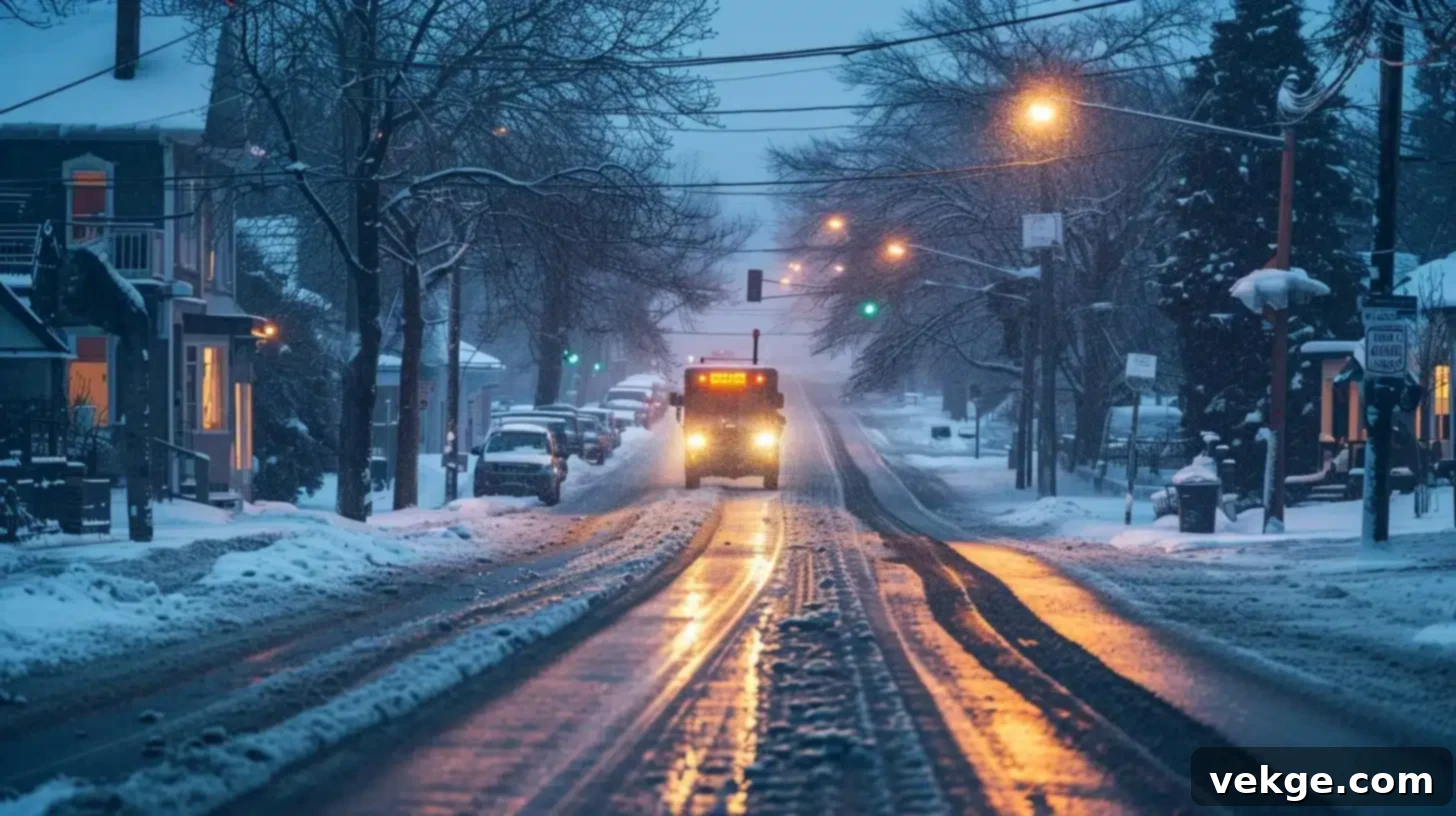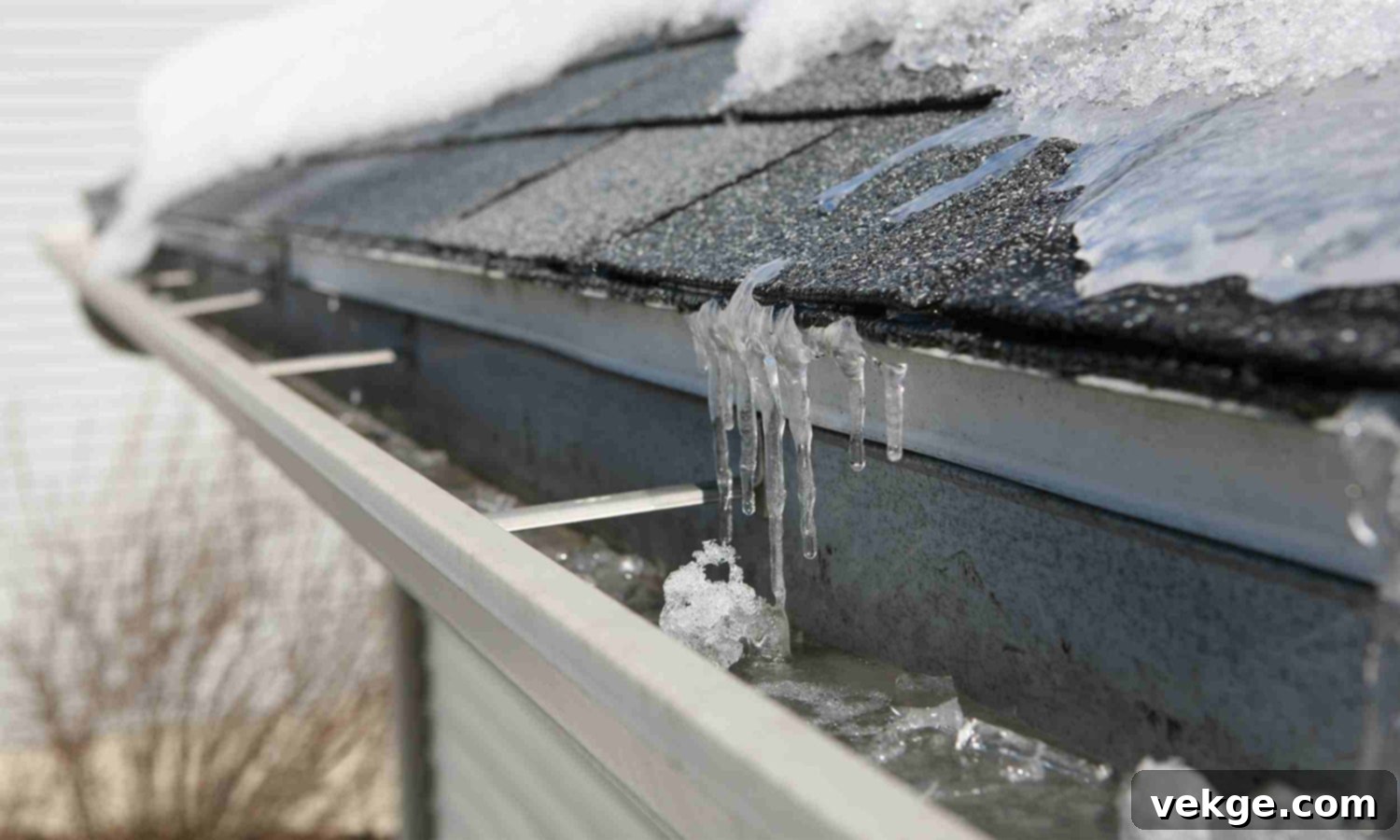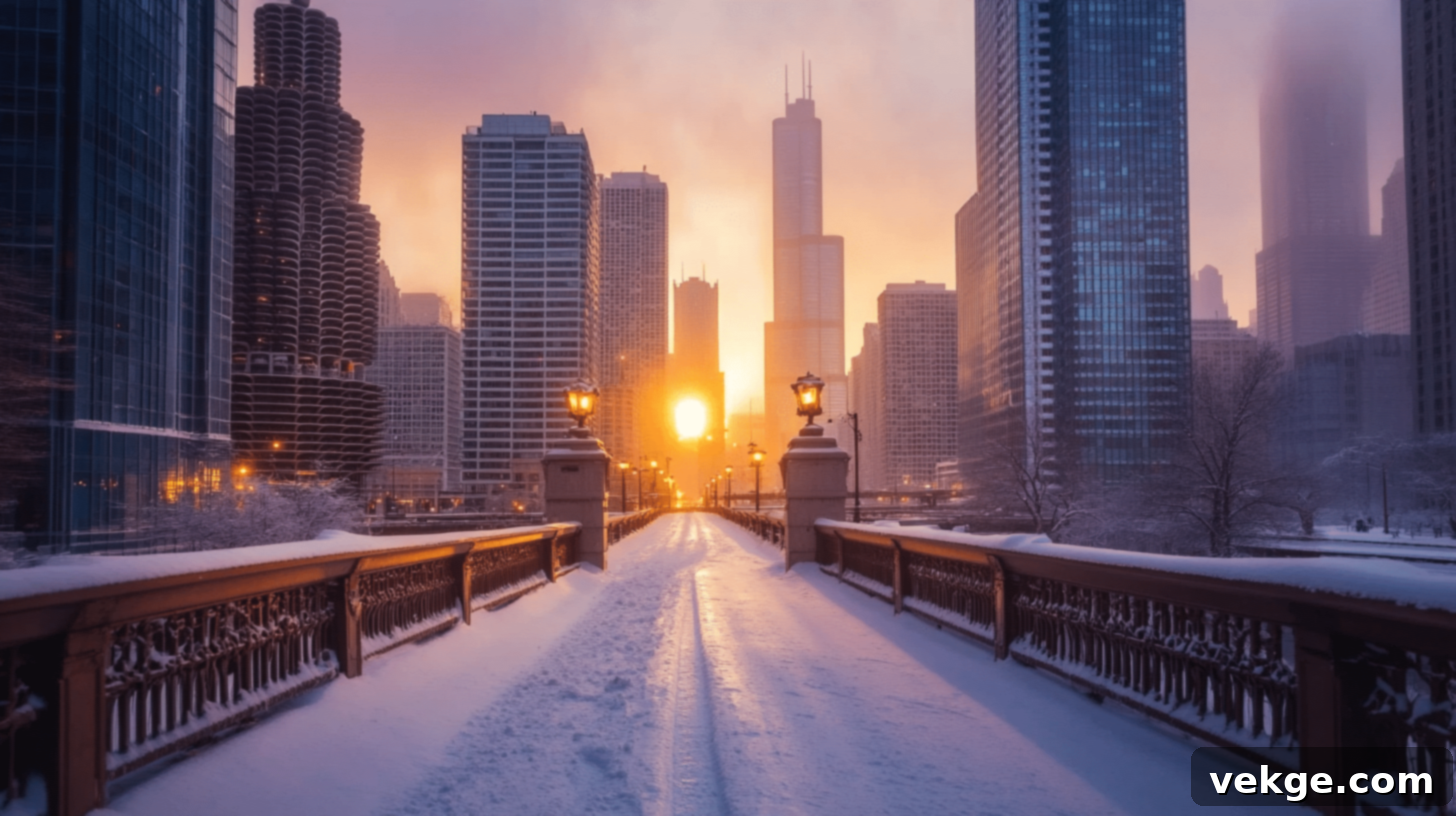Mastering Winter: Essential Snow Removal & Ice Management Tips for Chicago Area Businesses
Winter in the Greater Chicago Area presents unique and formidable challenges for businesses. From relentless snowstorms and rapidly forming ice to freezing temperatures that linger for weeks, maintaining seamless operations, ensuring safety, and preserving accessibility during heavy snowfall demands meticulous planning and proactive strategies. Even a seemingly minor snowstorm can escalate into costly disruptions, diminished customer satisfaction, and significant safety hazards without adequate preparation and a robust winter weather management plan in place.
Keeping your commercial property functional, safe, and inviting throughout the harsh winter months requires more than just basic sidewalk shoveling. Recognizing this complexity, many businesses proactively seek professional assistance from services specializing in commercial snow removal in Hinsdale and across the wider Chicago region. Whether you opt to partner with expert snow removal contractors or manage your winter operations internally, integrating these strategic tips will empower you to effectively manage snow and ice accumulation, ensuring your business remains open, efficient, and welcoming through every winter storm.
1. Develop a Comprehensive Snow and Ice Management Plan
The cornerstone of successful winter operations is a detailed snow and ice management plan developed well in advance of the first snowfall. This proactive approach ensures your business is fully prepared, rather than reacting chaotically when adverse weather strikes. Begin by conducting a thorough site assessment to identify and outline all critical areas requiring consistent snow removal and de-icing. These typically include main entrances, all walkways, parking lots, emergency exits, loading docks, and accessibility ramps.
It’s crucial to identify high-traffic zones and shaded areas where ice is most likely to form and pose significant slip hazards. Additionally, designate specific, safe locations for snow piles to ensure they do not obstruct customer parking, block essential access points, or impede visibility for drivers and pedestrians. A clear, well-communicated plan not only prevents storm-related chaos but also guarantees your property remains fully accessible and operational, even amidst the heaviest snowfalls.
- Site Mapping: Create a detailed map of your property highlighting all areas that need clearing, including priority zones.
- Equipment & Staffing: If managing in-house, ensure all equipment is serviced and staff are trained. If using a contractor, confirm their service scope and response times.
- Emergency Contacts: Keep a list of emergency contacts, including your snow removal service, local utility companies, and internal facility managers.
2. Prioritize Safety with Strategic De-Icing Methods

Icy sidewalks, pathways, and parking lots are far more than a mere inconvenience; they represent a significant liability risk for your business. Slips and falls can lead to serious injuries, workers’ compensation claims, and potential legal ramifications. Implementing a smart de-icing strategy is paramount for safety. Applying ice melt *before* a storm hits is a highly effective pre-treatment method; it creates a protective barrier that prevents ice from bonding tightly to surfaces, making subsequent snow and ice clearing much easier and more efficient.
Focus your initial de-icer application on high-traffic areas such as building entrances, ADA-compliant ramps, main sidewalks, and any areas prone to rapid freezing. After a storm, monitor conditions closely and reapply de-icer as needed to maintain optimal traction and prevent refreezing. When selecting de-icing products, prioritize options that are pet-friendly and plant-safe whenever possible to protect surrounding landscaping and prevent harm to animals that might traverse your property. Consider different types of de-icers (e.g., rock salt, magnesium chloride, calcium chloride, liquid de-icers) and their effectiveness on various surfaces and temperature ranges.
3. Maintain Clear and Accessible Parking Lots
A snow-covered and poorly maintained parking lot is a significant deterrent for customers and a source of frustration and delay for employees. Regular and thorough plowing is absolutely essential to ensure parking areas remain usable and safe. However, effective parking lot management extends beyond simply clearing the surface. Piles of snow left in awkward or haphazard locations can significantly block visibility, reduce the number of available parking spaces, and create dangerous icy runoff as they melt and refreeze.
Work closely with your snow removal professionals to establish efficient plowing routes that minimize disruptions to traffic flow and maximize parking capacity. Clearly designate specific, out-of-the-way areas for snow accumulation that will not interfere with customer access, sightlines, or emergency vehicle access. For high-traffic commercial lots, consider scheduling plowing operations during off-peak business hours to minimize any impact on your daily operations and customer experience. Ensure parking lines are visible and adequate maneuvering room is maintained for vehicles of all sizes.
4. Ensure Clear, Safe, and Inviting Walkways
Walkways serve as the initial point of contact for both customers and employees, making their clear and safe maintenance a paramount priority. A snow-covered or icy sidewalk not only appears unwelcoming but also presents a severe slip and fall hazard that can directly impact your business’s reputation and safety record. Prompt and efficient clearing is key.
Utilize robust snow shovels or, for larger commercial properties, invest in powered walk-behind snow blowers to clear paths quickly and effectively. Immediately after clearing snow, apply sand or ice melt to enhance traction and prevent ice formation. It’s critical not to overlook often-forgotten areas such as ramps, stairways, loading docks, and delivery paths; these zones can become just as hazardous—if not more so—when covered in snow or ice. Regular patrols during active snowfall are important to ensure these critical pedestrian zones remain safe and accessible throughout the day.
- Immediate Action: Clear snow and apply de-icer as soon as precipitation begins or accumulates.
- Frequency: During prolonged snowfall, schedule multiple clearing sessions throughout the day.
- Attention to Detail: Don’t forget curbs, gutters, and areas around garbage bins or mailboxes.
5. Monitor Roofs and Gutters for Damaging Ice Dams

The impact of snow and ice isn’t limited to ground-level areas; roofs, gutters, and downspouts are particularly susceptible to damage and hazards during winter storms. Ice dams, formed when melted snow refreezes at the colder eaves, can cause significant water infiltration into your building, damage gutters, and create dangerous falling ice hazards for anyone below. Regularly inspect your roof throughout the winter, especially following heavy snowfall events.
Safely clear off excessive snow buildup using specialized roof rakes for accessible areas, or, for more significant accumulations and higher roofs, hire qualified professionals to prevent structural stress and the formation of ice dams. Ensure that gutters and downspouts remain completely free of leaves, debris, and ice to allow for proper drainage of melting snow. Consider installing heat cables in problem areas to prevent ice dam formation and ensure continuous water flow.
6. Implement Clear Communication with Employees and Customers
Effective and transparent communication becomes absolutely essential during severe winter weather events. Your employees need to be well-informed about critical details such as reporting times, specific safety protocols to follow, and clear instructions on how to access the property safely during adverse conditions. Similarly, customers greatly appreciate being kept in the loop, especially if business hours change, services are modified, or access is temporarily impacted due to snow or ice.
To ensure everyone remains informed and safe, utilize multiple communication channels. This includes email alerts, updates on your website, active posts on social media platforms, prominent signage on your property, and even local media advisories if necessary. Post timely updates regarding parking lot conditions, confirmed clear entrances, or any adjustments to your operational schedule. This level of transparency not only reduces potential frustration but also reinforces a sense of safety and preparedness for both your employees and valuable customers.
7. Prepare Thoroughly for Potential Power Outages
Winter storms often bring more than just snow and ice; they also carry a significant risk of power outages. A blackout during business hours can critically disrupt operations, lead to substantial lost revenue, and compromise the safety and comfort of everyone on your property. Investing in reliable backup generators is a wise strategy to ensure critical systems remain operational, particularly heating, essential lighting, security systems, and point-of-sale (POS) equipment.
Beyond generators, keep a readily accessible supply of flashlights, emergency lighting, and essential emergency supplies such as first aid kits, extra blankets, and non-perishable food items. Develop a detailed plan for maintaining internal and external communication during outages. Crucially, train your staff on all emergency protocols, ensuring everyone knows how to respond safely and effectively if the power goes out unexpectedly, including manual override procedures for doors or equipment.
8. Protect Landscaping from Winter Damage

Your property’s landscaping often endures significant stress and damage during the winter months. Heavy snow accumulation, the corrosive effects of salt, and abrasive ice can severely impact your plants, grass, and decorative features. Before winter descends, take proactive steps such as wrapping delicate shrubs and smaller trees with burlap to provide crucial protection against harsh winds and heavy snow loads. Applying anti-desiccant sprays can also help prevent moisture loss.
When piling snow, always avoid landscaped areas, as the sheer weight of snow can crush plants, compact the soil, and lead to root damage. Furthermore, runoff from melting snow containing de-icing salts can severely harm plants; consider using salt-tolerant plant varieties for areas adjacent to walkways and driveways where de-icing products are most frequently applied. Installing temporary barriers can also protect sensitive plants from salt spray and snow piles.
9. Set a Realistic and Comprehensive Winter Maintenance Budget
Keeping your business fully operational and safe throughout the winter season inevitably incurs additional costs, ranging from professional snow removal services to an ample supply of de-icing materials. To effectively manage these expenses, consider establishing a seasonal contract with a reputable snow removal company that offers flat-rate pricing. This allows for predictable budgeting and ensures consistent, reliable service throughout the entire winter, regardless of the number or severity of storms that hit.
Beyond contractor fees, remember to account for other essential costs in your budget: purchasing high-quality de-icer, potential staff overtime for internal storm cleanup, and necessary equipment maintenance or emergency repairs. Requesting multiple quotes from different contractors and thoroughly checking references will help you find the best value and ensure reliable service. It’s also wise to allocate a contingency fund for unexpected heavy snowfall events or unforeseen equipment issues.
Staying Open, Safe, and Successful All Winter Long
Chicago winters are renowned for their intensity, truly testing the resilience and preparedness of even the most experienced business owners. However, by adopting the right strategies and maintaining a proactive mindset, you can successfully keep your doors open, your property safe, and your operations running smoothly through even the harshest weather conditions. Effective snow and ice management, crystal-clear communication with all stakeholders, and smart financial budgeting are the critical elements that make all the difference in maintaining business continuity and a welcoming environment during the snowy months.
So, gear up, meticulously prepare your property, and ensure your Greater Chicago Area business continues to thrive—even when the snow piles high and the temperatures plummet. Investing in professional solutions like commercial snow removal in Hinsdale can free up your valuable time and resources, allowing you to focus on your core business while experts handle the winter weather challenges.
